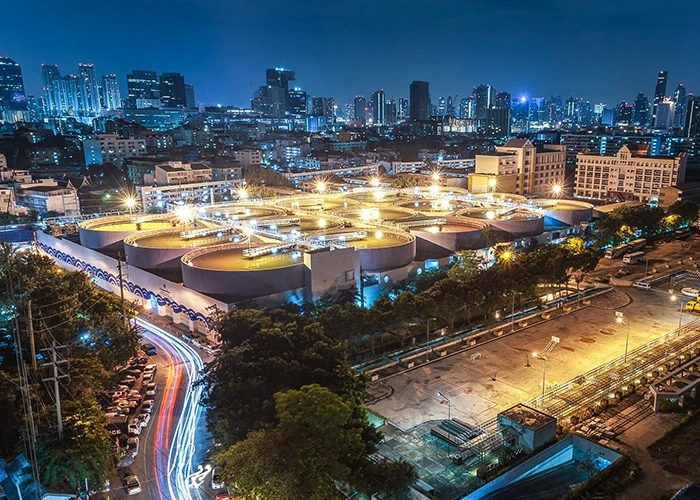& Construction

Integrated BIM tools, including Revit, AutoCAD, and Civil 3D
& Manufacturing

Professional CAD/CAM tools built on Inventor and AutoCAD
The flash floods in China, Germany, and Belgium took a horrific toll in the summer of 2021. With recovery operations still underway, talk has naturally turned to the future. How can municipalities prepare for the extreme weather that climate change is triggering with alarming regularity?
Lamia Messari-Becker, a civil-engineering professor at Germany’s University of Siegen, told Deutsche Welle in July 2021 that vague discussions about adapting to potential climate impacts aren’t enough anymore: “Now is the time for engineers. We need real ideas and real solutions.”
Water resilience refers to the ability to plan for, mitigate, and respond to floods, hurricanes, droughts and other catastrophic climate events that can impact infrastructure.
Fortunately, forward-thinking engineering and construction firms around the world are already on the case. By using digital water-management strategies, they’re improving utility operations to ensure greater water resilience and sustainability.
A combination of building information modeling (BIM) and cloud technology is helping overhaul aging plants and improve the management of municipal water infrastructure from Brazil to Bordeaux. Existing resources are being optimized, and new facilities are being constructed with extreme weather and strengthened wastewater measures in mind.
That’s a debate that needs to play out in many cities, she says, but in the meantime, things can be done to make existing infrastructure more resilient to floods, as well as more sustainable.
“With our solutions, we can, for example, use weather-forecast data to anticipate where heavy rainfall will be concentrated,” Le Vaillant says. “Sensors in the network can tell us if the tanks in those areas are already full or likely to overflow. The utility company can use that information and take preventative steps ahead of any potential flooding.”
Veolia Water Technologies develops its own solutions for water management. According to Veolia CAD Tools and BIM Manager Sifdin Barkaoui, the company uses the most performant BIM technologies to produce and manage 3D models, relying primarily on Autodesk solutions, including BIM 360, Revit, AutoCAD Plant 3D, Navisworks, Recap, and Inventor.
He points to a large project in the Paris region where Revit and BIM 360 were used as the primary collaboration platforms during construction. At the end of the project, the client wanted a digital twin, so Veolia built an openBIM data structure that enabled the twin’s creation and seamless handover to the client after construction.
The model will be used to improve maintenance operations, increase the safety of plant engineers, and minimize operational risks that could impact the plant’s performance.
“It’s a huge improvement over the 2D paper formats you still see used in some old plants,” Barkaoui says. “For instance, BIM allows you to predict the impact of the shutdown of a pipeline in a few clicks by highlighting the whole network in 3D, which greatly facilitates decision-making.”
Veolia is also using BIM to help utilities plan for the future and design new drinking-water-production and wastewater-treatment plants that can withstand and adapt as weather patterns shift.
“BIM gives us better control over project management and project data,” Barkaoui says. “We use it to inform design, select materials, and manage assembly and construction work, all the way to final acceptance by the client.”
Once a project is completed, Veolia gathers the accumulated construction, technical, geometric, and design data from the new plant to create a digital twin. That 3D twin can then be used to optimize day-to-day operations in response to current conditions and improve risk management.
Veolia also uses BIM in its water infrastructure refurbishment and rehabilitation projects; 3D-scanning technologies survey the existing structure and pinpoint exactly where improvements need to be made.
Italy and other Mediterranean countries have to prepare for water stress as higher temperatures make rainfall less predictable. Veolia’s Hubgrade plant-management solution maximizes the amount of treated water for irrigation, with 60%–70% fully reused for agricultural purposes. That’s the highest percentage in Europe.
The software is helping Milan’s Nosedo Wastewater Treatment Plant (WWTP)—the city’s largest—optimize daily process performance in real time. It’s keeping tank capacity in reserve should extreme weather strike and increasing the amount of reclaimed water available for agriculture. This is also reducing Nosedo’s environmental footprint, enabling it to operate with less energy while optimizing chemical consumption to achieve water-quality standards.
“You don’t buy a wastewater treatment plant the way you buy a dishwasher or mobile phone,” Le Vaillant says. “It takes time and extensive planning, but things are accelerating. The amount of data and intelligence we can contribute thanks to technologies like BIM is helping us answer some of the sustainability challenges utility companies are facing right now.”
Mark de Wolf is a freelance journalist and award-winning copywriter specializing in technology stories. Born in Toronto. Made in London. Based in Zürich. Reach him at markdewolf.com.
AECO
AECO
Executive insights









